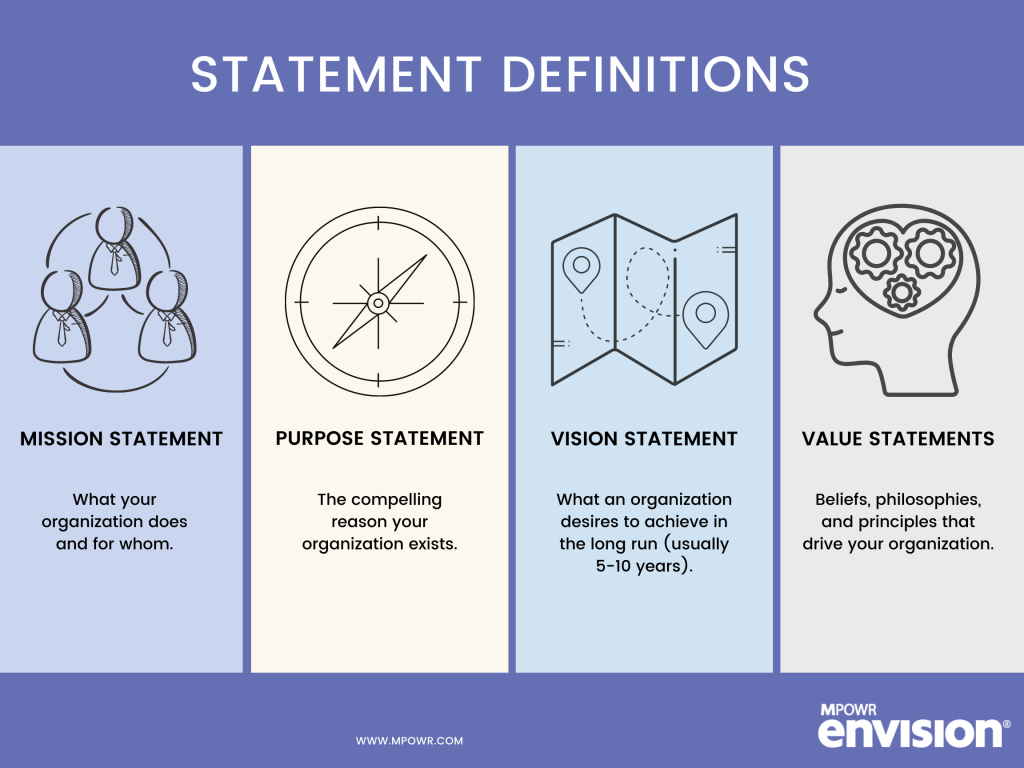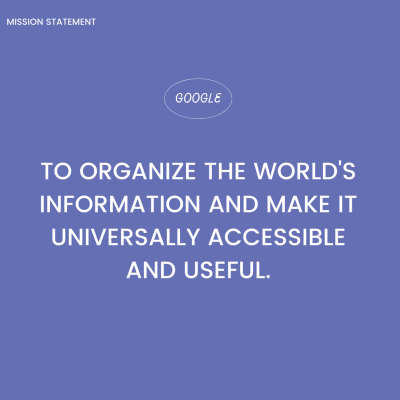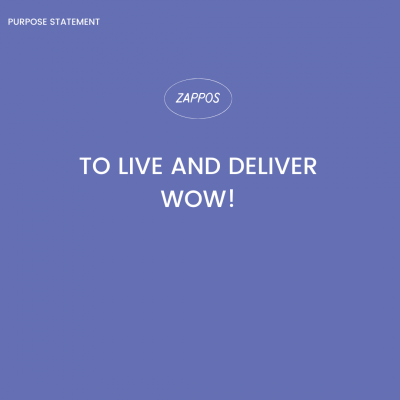
How MPOWR Envision’s Customer-Centric Approach Positions You For Strategy Implementation
September 13, 2021
5 Signs You Need a New Vision Statement [with Infographic]
October 26, 2021Connecting with Stakeholders: Defining Your Mission, Purpose Statement, Vision, and Values

Stakeholders, more now than ever, want to support a brand that they understand and respect. Inward-facing statements and goals motivate and align employees in order to achieve their strategy. Outward-facing statements aim to connect with external audiences– including prospects, customers, and vendors– and create brand perception.
In fact, the 2020 Consumer Culture Report shows that “71% of consumers prefer buying from companies aligned with their values.”
That’s a statistic no organization should ignore; instead, it should motivate teams to take a hard look at their mission, purpose, vision, and values.
If you’re stuck in your visioning stage, look below to help guide and focus your objectives.

What is a Mission Statement?
Mission is the reason your organization exists and typically doesn’t change. It tells people what you do and for whom do you do it. Traditionally, mission statements have been written to be clear, factual statements that are direct and have the purpose of informing people outside the organization as to the reason for their being.
This is especially useful if the name of the organization isn’t self-explanatory.
Many organizations still have fact-based missions because they want to inform people, not necessarily to energize them.
Mission has morphed in the last decade and is now viewed with a more jaded eye by the tech sector. Many of these companies believe a mission statement is unnecessary if you have properly defined your values and your vision. Mission as a factual statement doesn’t add value because the definition of the organization doesn’t carry the passion or the goals that values, vision, or purpose does.
EXAMPLE OF A MISISON STATEMENT: “To organize the world’s information and make it universally accessible and useful.” -Google

What is a Purpose Statement?
Simply put, a purpose statement is a mission plus driving force.
Purpose informs why a group of people within an organization come to work every day. A purpose is less factual and more emotional, and is designed to motivate people on the inside of the organization.
It gives people an answer to the questions:
- Why do I do this work?
- Why am I a part of this organization?
- What am I accomplishing here with my fellow employees?
- What is our greater good?
Purpose statements have developed in organizations because employees have expressed a desire to be a part of an overall effort, not just working to produce something.
Purpose also translates the production of a product or service into a compelling reason. Unlike a traditional mission statement, a purpose statement is also much easier to build a culture around.
EXAMPLE OF A PURSPOSE STATEMENT: “To live and deliver WOW!” -Zappos

What is a Vision Statement?
A vision statement is a part of a purpose statement in that it harnesses the same energy and takes it into the future, painting a picture of what the world will be like when all employees are aligned and focused.
Vision, together with values, is said by many to be all you need to create a company culture.
There are two types of vision statements: the aspirational and the specific.
The aspirational vision inspires.
The specific vision is focused on internal goals and measurements that allow the organization to see the incremental steps to achieve to get to the end state.
Vision is ever changing and should be adapted to environment and continual change.
EXAMPLE OF A VISION STATEMENT: “One day, all children in this nation will have the opportunity to attain an excellent education.” -Teach for America

What are Company Values?
Values are the cornerstone of culture and lay out your non-negotiables. While many organizations craft aspirational goals, our strategy experts at MPOWR Envision recommend that, instead of being ambitious, your values should be factual. When your values just live on a piece of paper, instead of in the workplace, employees can become cynical, resentful, and dubious of leadership.
Furthermore, values should be as specific as possible, written to evoke a response that is unmistakable and repeatable by everyone in the organization. There should be no question as to how to interpret values; clarity and specificity should be the hallmark of a good value statement.
EXAMPLE OF VALUES: “WE ARE LISTENERS AND INNOVATORS. We encourage new ideas from our team and customers. We not only design what you want; we design what you need.” -MPOWR Envision

Conclusion
Your mission, purpose, vision, and values are more than just statements or taglines. They are foundational. They contribute to your culture, your strategy, and your stakeholders’ commitment to your brand.
We want you and your organization to be successful, which is why we’ve created resources for every step of your strategy journey. If you need extra support, be sure to check out our 101 Guide to a Strategy Execution Culture or our award-winning strategy services.
Do you know someone who should read this article? Share the link below!



